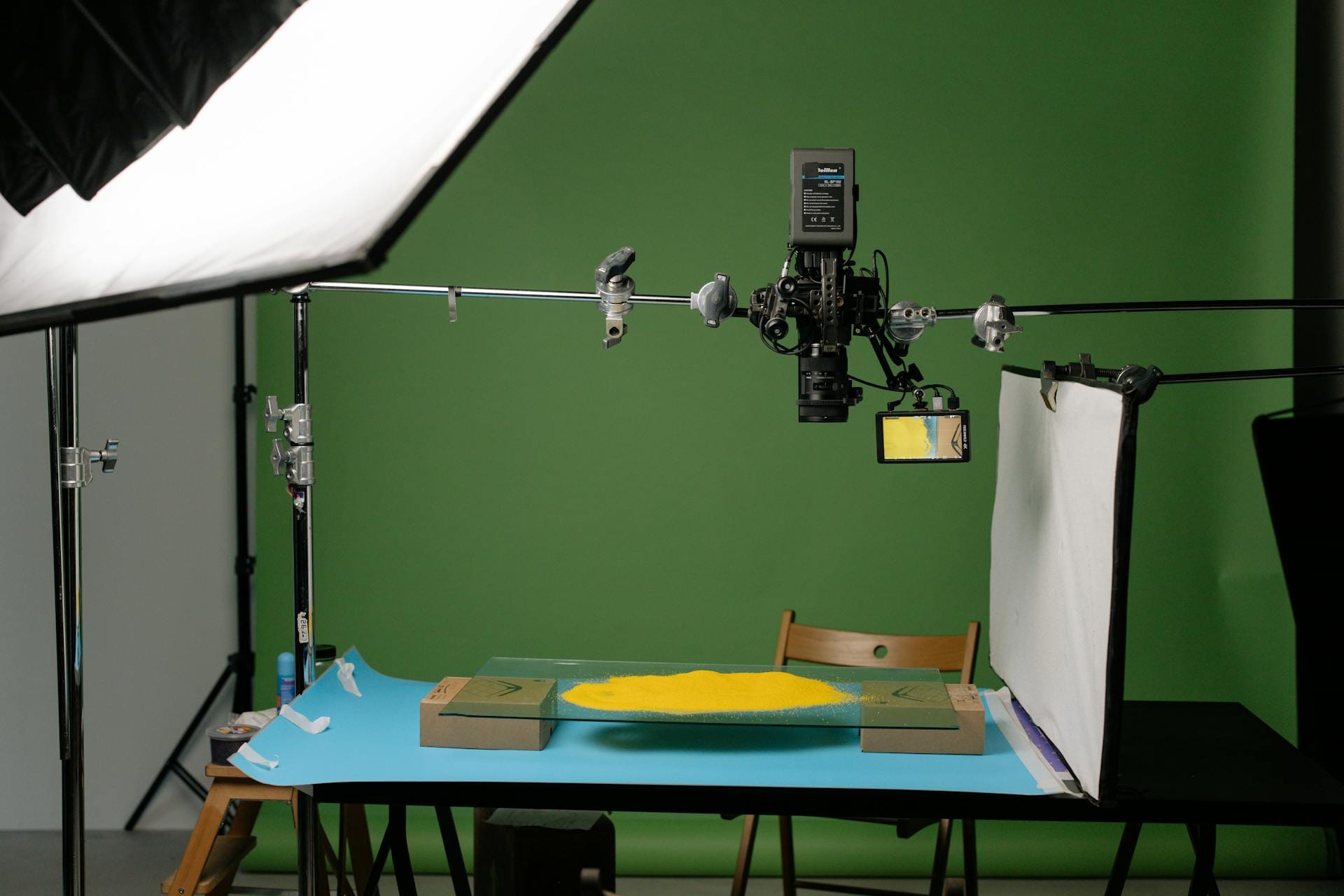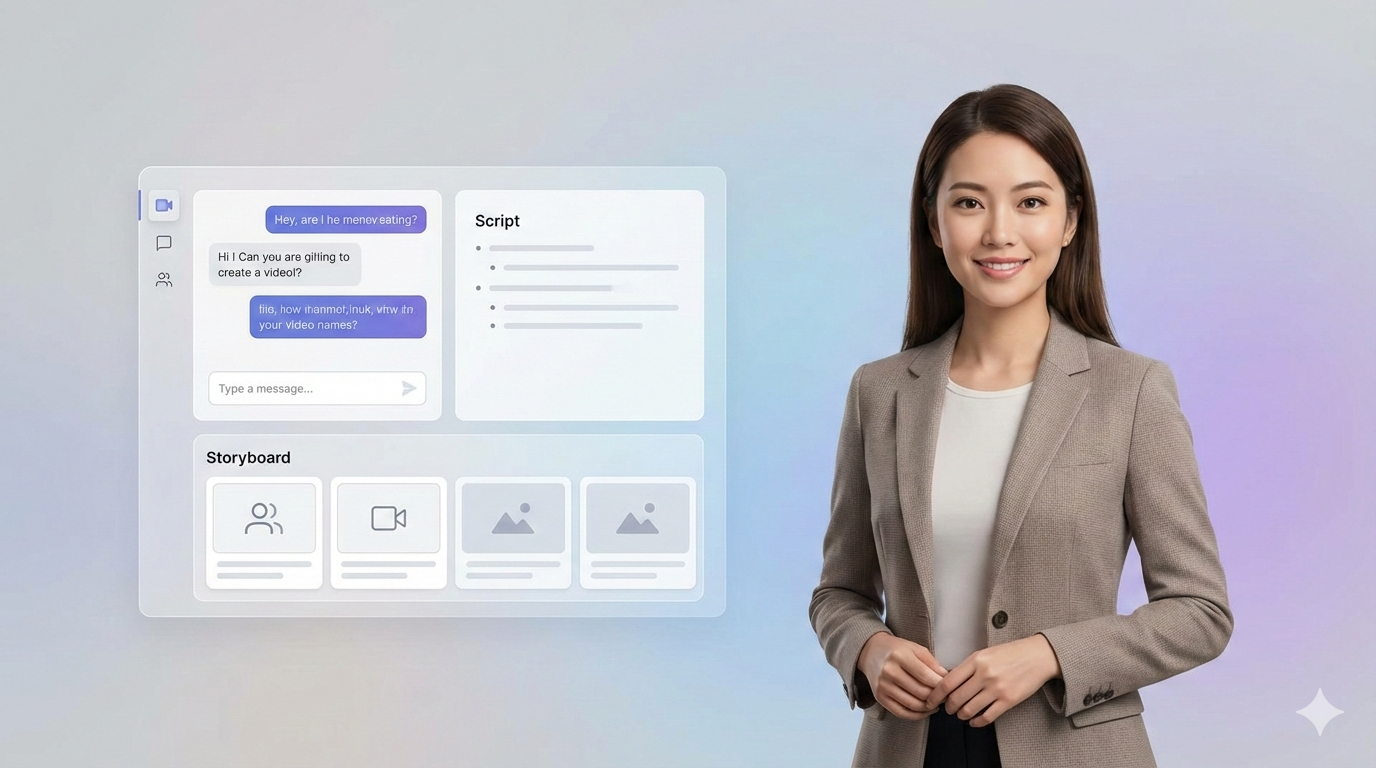TL;DR – Why “Convert URL to Video” Is a CMO’s New Power Move
Imagine transforming any product URL into a fully-branded, high-performing video, instantly. That’s what URL-to-video automation unlocks for modern marketing teams. No studio. No script. Just strategy.
But this tech isn’t just about speed—it’s about scale. One click turns URLs into dynamic video assets for product pages, ads, lifecycle emails, and onboarding flows. Suddenly, your small team looks like a content powerhouse.
This whitepaper breaks it all down: how it works, why video still outperforms static assets, and how consistent, data-driven video creation unlocks iteration and insight like never before.
Brand voice? Nailed. Budget? Intact. Performance? Up and to the right.
CMOs, this isn’t just a tool—it’s a multiplier. Read on. Your next campaign might just start with a URL.

It Starts With a Product Page...
There’s a moment that every team knows. You’re on your third espresso, staring at a product page, and someone says, “Can we get a video for this by Thursday?” And at that moment, you laugh—not because it’s funny, but because it’s absurd. You don’t have time. You don’t have a budget. You don’t have a script, a storyboard, or a voiceover artist named XYZ from ABC Platform.
But you do have a product URL. And lately, that’s starting to be enough.
This is a story about a quiet shift happening beneath the buzzwords. It’s not about the latest AI trend or a shiny new tool. It’s about the simplest possible question in digital marketing today: what if a product URL could make its own video?
Not a trailer. Not a brand anthem. Just a clean, clear explainer video that shows the product, names its benefits, and tells its story in 60 seconds or less.
No studio. No shoot. Just automation meeting intention. And honestly? It’s not just efficient. It’s liberating.
Let’s Start With the Obvious: Why Video Still Wins
We’ve all heard the stats, right? Video is the highest-performing content format across nearly every channel. It builds trust, drives conversions, and keeps people on the page longer. But it’s easy to forget why.
Video taps into something primal. Movement. Voice. Narrative. It mimics how we process the real world. And in a digital landscape where most content is static and skimmable, video offers a reason to stay.
Here’s what the research says:
98% of consumers say they’ve watched a video to learn more about a product or service.
84% say they’ve been convinced to buy after watching a product video.
Pages with video see users spend 2.6× more time on-page.
A product page with video has an average convert at 4.8% as compared to 2.9% .
Using video marketing can lift conversion rates by about 34%.
Social videos are shared 1200% more than text and image posts combined.
Adding video to product pages can boost conversion by up to 80%.
Post-purchase explainer videos can reduce support queries by 62%.
These aren’t just engagement stats. They’re performance levers. They’re proof that video pays for itself, over and over.
The Bottleneck: Why Most Teams Don’t Create Enough Video Content
Video is a paradox. Everyone wants it. No one has time for it.
Traditional video creation is time-intensive and expensive. Scripting, storyboarding, production, revisions—each step adds days and dollars. Even a basic 60-second explainer video can cost $3,000 to $10,000 depending on quality and complexity. For a growing e-commerce brand with hundreds of SKUs that math doesn’t work.
Here’s what marketers say when asked why they don’t create more video:
Lack of time
Lack of understanding where to start
Lack of resources (in short, expensive)
And so most brands do the same thing: prioritize one or two “hero” products, make a single polished video, and let the rest of the catalog fend for itself.
It’s not for lack of effort. It’s the reality of bandwidth.
But what if you didn’t need a production team to make a video? What if your product page could do it for you?
Enter: URL-to-Video Automation?
This is where things get interesting. URL-to-video is a simple but powerful idea: you provide a product URL, and a system automatically generates a video using the content already on the page.
It’s not just screen recording or animation templates. It’s structured automation that pulls in:
Product images
Feature descriptions
Price and specs
Review snippets
Brand visuals
Calls to action
Then it composes a video, scene by scene, with transitions, text overlays, music, even voiceover. All within minutes. You can tweak it, of course. Change the color palette. Edit the voice tone. Adjust the pacing. But you don’t start from zero. You start from the product itself.
And that changes everything.
How URL-to-Video Works (Step-by-Step Breakdown)
If you’re wondering what’s under the hood, here’s a breakdown of the process:
URL Input: The user pastes in a product URL—say, a page from their Shopify or WooCommerce store.
Content Parsing: AI scans the page and identifies key assets: product name, images, bullet points, descriptions, ratings.
Script Generation: A voiceover or caption script is created, either directly from copy or via summarization. For example: “Introducing the Awesome 3.0—our lightest, fastest version yet.”
Scene Design: Each visual element (image or text) is assigned to a “scene” in the timeline. Layouts or video editing template follow a templated structure—hero image, feature highlight, lifestyle visual, CTA.
Audio Layering: Background music is added. Text-to-speech may voice the script. Users can pick styles: casual, upbeat, cinematic, and many more.
Rendering & Export: The video is rendered and available for download. The whole process takes between 3 and 10 minutes, depending on the platform.
Who Benefits From URL to Video (And How Much)
You don’t need a 10-person team or a six-figure budget to use this. In fact, the less resourced you are, the more powerful this gets.
For small brands and solopreneurs:
Level the playing field with big retailers.
Create video content for every product, not just bestsellers.
Launch new products with a video on day one.
Add motion and story to a static Shopify, Amazon, or any other store.
For marketers:
Generate ad creatives for retargeting instantly.
A/B test messaging with minimal overhead.
Speed up go-to-market timelines.
Scale campaigns without scaling teams.
For product teams:
Keep product videos updated as specs change.
Share consistent messaging with sales and support.
Improve onboarding or feature demos.
In a world where 66% of marketers say product videos deliver the highest ROI of any content format, this kind of URL to video capability by platforms like AiReel.io isn’t just helpful. It’s strategic.
URL-to-Video vs. Traditional Video Production
Let’s map it out:
Aspect | Traditional Production | URL-to-Video |
Cost per video | $3,000–$10,000+ | Subscription or Credit-based (AiReel.io starts from USD 5) |
Time to create | 2–6 weeks | 5–10 minutes |
Scalability | Low—manual work per video | High—batch generation |
Customization | High, but expensive | Medium, templated |
Update ease | Requires re-editing | Regenerate from updated URL |
Skill required | Scripting, design, editing | None—marketers can DIY |
Use case fit | Brand films, hero products | Product explainers, ads, feature launches |
Think of it this way: Traditional video is bespoke tailoring. URL-to-video is ready-to-wear, customized at checkout.
When to Use URL-to-Video Automation
This isn’t about replacing every video with automation. It’s about using automation where it makes sense. And that’s almost everywhere.
- Product pages: Embed explainer videos on your PDPs to increase conversion and reduce bounce. Even simple motion helps answer customer questions faster.
- Email marketing: “New in store” emails hit harder with a video thumbnail. Click-throughs increase. Time on site grows.
- Paid ads: Dynamic product videos outperform static images in retargeting. ROAS can lift when the creative matches the user’s recent browsing.
- Social content: Batch-create short videos for Instagram, TikTok, and Facebook. Build engagement with minimal production lift.
- Seasonal campaigns: Repurpose product pages into holiday or campaign-specific videos—without rewriting your whole ad stack.
- Product onboarding: Turn feature pages into how-to videos for customers post-purchase. Reduce support queries. Improve retention.
The URL to Video playbook is only limited by how often you wish your product could speak for itself.
The Strategic Value: Scale, Speed, and Insight
Beyond time and cost savings, URL-to-video unlocks something more elusive: marketing consistency at scale.
Every product gets a story.
Every channel gets fresh, brand-aligned content.
Every campaign can iterate without rebriefing a studio.
It’s the infrastructure shift that lets you say yes more often:
- Yes, we can test that variant.
- Yes, we can launch by Monday.
- Yes, every product gets a video this quarter.
You stop trading quality for speed—or vice versa. You also start optimizing what matters.
- Want to see if a video mentioning "wireless charging" increases Average Order Value (AOV)? Test it.
- Curious whether a “how it works” voiceover reduces cart abandonment? You can find out.
When video creation takes minutes, not weeks, you’re not just scaling content, you’re scaling insight. You start building systems, not exceptions.
Limitations and Nuance
Let’s be honest, this isn’t a silver bullet.
Automated videos aren’t cinematic. They won’t replace your hero film.
Templated layouts can feel repetitive if not diversified.
Voiceovers may sound robotic unless refined.
Brand nuance needs manual oversight. Automation gets you 80% there; you still need taste and judgment.
But if your current alternative is no video at all for 80% of your products, the tradeoff is more than worth it.
Final Thought: Start With the Link
We spend so much time chasing big ideas in marketing. Viral campaigns. Trend-jacking. Brand reinventions. But every so often, the real unlock is smaller. Quieter.
A single product link.
You’ve already invested in your product page—photos, copy, reviews. URL-to-video lets that investment speak, in motion, in minutes.
It doesn’t have to be perfect. It just has to be useful.
And in a world that rewards clarity over cleverness, consistency over spectacle, and speed over perfection—that might just be enough.
Maybe more than enough.
If you're curious how this could work for your team, whether you're launching your fifth product or your five-hundredth, we're just an email away.
✉️ Write to us at hello@personate.ai or team@aireel.io .
We’d love to see what your product page can become, when it’s given the power to speak.


